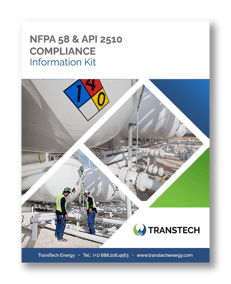There are 2 ways to inject AutoGas when performing a Bi-fuel conversion on a gasoline engine: Vapor injection or Liquid injection. This article will hit some key points of the differences of these systems and how they operate and demonstrate the significant advantage liquid injection offers in Autogas Bi-fuel engine systems.
A Vapor injection system takes liquid AutoGas from the tank and converts it to vapor via a vaporizer, once it is in vapor form it is then injected into the motor at the intake manifold right before the intake valve. The vaporizer is connected to the vehicles heating hoses and uses that heat to vaporize the liquid AutoGas. These vaporizers have a reputation for being very temperamental and can even leak Autogas directly into the vehicles cooling system upon seal failure.
Vapor systems use a “piggyback” ECU to monitor the engine parameters. This requires the installer to open up the main factory wiring harness of the vehicle and solder a large number of connections, in some systems up to 40 wires need to be cut and soldered. This is a very intensive and invasive process and is very time consuming. Converters then use the engine information to program fueling maps into the vapor systems ECU so that the correct amount of Autogas is injected into the vehicle. The only way that this can be done properly is to be tuned on a rolling road dyno. This allows multiple driving scenarios to be obtained and a proper fuel map to be developed under varying load conditions. An area of concern with this type of mapping is that conversion “specialists” are relying on driving vehicles in parking lots and down back roads while trying to develop fuel maps for vapor systems. How in depth can the maps be in limited scenarios? This is the main reason we see vapor systems that seem to work one day and run bad the next- they have not been tuned properly from the start.
Once “tuned” the vapor is injected into the vehicles combustion chambers as a vapor. This could create a problem with the intake valves of the engine. These valves get very hot during operation and when they close they must quickly dissipate that heat into the head of the engine. During gasoline operation the gasoline actually cools the valve down as it enters the combustion chamber. Vaporized Autogas does not cool the valves as it enters the combustion chamber, couple that with the fact that AutoGas burns hotter than gasoline and we run into the issue of valve recession. Valve recession occurs when the intake valves become hot and cannot dissipate that heat to the cylinder head effectively. Once this happens, the head, usually made of aluminum, begins to melt when the valve hits it. This ends up destroying the valve seat and allows the valve to “recess” into the head, losing its seal. Once valve recession occurs the only option to repair it is to pull the heads and perform a complete valve job. Valve recession is not only an issue for vapor Autogas but it is also an issue for CNG converted vehicles. Some original equipment manufacturers have begun to offer Autogas/CNG prepped engine options that add hardened valves and valve seats to motors so that valve recession does not occur.
Now that we understand more about Vapor injected Autogas conversions let’s talk about Liquid Injected AutoGas conversions…
Liquid Autogas injection pumps liquid directly from the tank and injects it directly into the intake manifold through electronic injectors as a liquid into the combustion chamber. Since it injects liquid there is no need for a vaporizer. There is however an Autogas pump located in the tank. This pump supplies correct fuel pressure to the injector rail just like its gasoline counterparts. This design also consists of an AutoGas return line and AutoGas pressure regulator to control the Autogas pressure.
The calibration for Liquid Autogas injection is actually done at the injectors themselves. When the system is being designed engineers take the factory gasoline injector and flow test it, they then match up a corresponding Autogas injector that will give the proper ratio of fuel to air for the combustion chamber. Because of this breakthrough technology Liquid injection conversions such as the Icom JTG do not need “piggyback” computers or any aftermarket tuning. These systems just consist of a switching box that cuts the signal to the stock gasoline injectors and sends that signal to the AutoGas injectors. Since the factory OEM ECU and fuel map is used you get the same drivability and performance as you did when it ran on gasoline, not to mention you do not have to hack into the factory wiring harness to add a “piggyback” computer.
When Liquid is injected into the motor directly in front of the intake valve it almost instantly begins to evaporate into a vapor, as it is doing this it provides a cooling effect on the intake valve. This cooling effect completely eliminates the issue of valve recession with this type of AutoGas injection.
From this you can see that not all conversion systems are created equally. The delivery of the AutoGas into the motor is a crucial part in the performance and quality of the conversion. The OEM’s have picked up on this and now offer dedicated AutoGas vehicles with liquid AutoGas injection.
For more detailed information on Liquid Autogas Injection Engine Systems, visit the Alternative Fuel Systems Division of TransTech Energy at http://www.transtechenergy.com/alternative-fuel/propane-motor-fuel/ .






